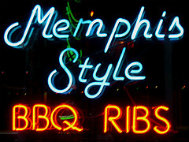
Salivations 1:1 Verily,verily I say unto thee, an open flame shall not touch thy cooking flesh or thine days will be numbered before you are cast into the lake of ire.
Goatesians 1:2-4 The only way to the BBQ is with the meat. It is blasphemous and very naughty in my wholly site for thou to roast, even over the slow fire, beef, chicken, venison, goat, lamb, possum, armadillo, rattlesnake or any other creature that roams the earth, the weasel, the mouse, the great lizard according to its kind, the gecko, the land crocodile, the lizard, the sand lizard, and the chameleon…. and call this meat B-B-Q. They shall remain an abomination to you; Of their flesh you shall not eat, and their carcasses you shall not touch; they are unclean to you. The sacred pig is the only animal acceptable in my site for B-B-Q.
Baah 1:5 It is unwholly and unwise and another abomination to use a cooking vessel that is a gas grill to cook the sacred BBQ. Just as the BBQ must be pork, so must the fire be charcoal with hickory chips, the aroma is pleasing to my nostrils.
Hornations 1:9 It is unholy to anoint the sacred pig with thy sauce while the wholly BBQ is cooking. To put sauce on the wholly flesh is impure and unclean. I will turn my eyes away thee and cease to bless those who transpire against me and do not keep my commandments. Thou shall not be impatient while thy cookest the wholly BBQ. Bring not to my table meat with the fat still in it. Cook the meat slowly and turn it often and you will be blessed.
Gnaw 1:20-23 When serving the blessed and wholly BBQ thy condiments shall not include green garden vegetable, or green peas, or squash, or rutabagas, or turnips, or kale, or brussel sprouts, or field peas, or celery, or broccoli, or cauliflower, nay I say unto you. BBQ beans are right on, as is mustard slaw and bread.
Bud 1:1 Thy must drink beer with thy BBQ or you will be smitten and turned into a pillar of salt.
Ever since the first bolt of lightning hit a tree and fell on and immolated some poor, unfortunate animal, humans have been enjoying the benefits and flavor of cooked and smoked meats. Look, I don’t know exactly how it happened, no one does, but what I do know is that humankind has been smoking meats for flavor and preservation for as many as 1.9 million years according to some sources.
There are literally hundreds of BBQ sites on the web, and some, like Amazingribs are a virtual Wikipedia of BBQing and smoking, but they actually try to charge you for their site and put-up nag screens everywhere, so be aware of that. Many will disagree with some of the points that I make in these ABCs, and I really don’t care as my recommendations are made from decades of smoking & BBQ’n experience, and I am still learning.
However, I pretty much have it down to science now, and I know what I am writing about, so there. I’m not going to try to cover more elaborate smoking of cheese, jerky, vegetables, fish (or hakarl), but primarily ribs, pulled pork, chicken and brisket. Remember, if it ain’t pork, it ain’t BBQ but properly smoked beef brisket is to die for. I will not, of course, be able to put step by step instructions on how to do everything, but there are plenty of tutorials on the web, and you can use these ABCs as merely a guideline to your delicious cooking. I proudly present… THE ABCs OF BBQ-smoking the meat edition.
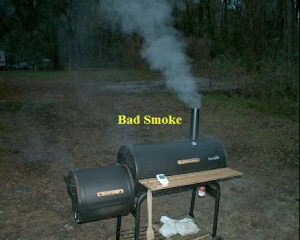
Always be Smoking–Always be smoking, ALWAYS be smoking! WRONG! The dominant flavor of BBQ is the meat, not the smoke. Pork, beef, chicken, all have different receptiveness to smoke, but to leave the smoke on the meat the entire time of COOKING is a big mistake. Too much smoke, or the wrong kind of smoke can leave your meat with a bitter, unpleasant taste.
A big Boston Butt, which is a pork shoulder (see picture below) minus the big bone (and the picnic), may require as much as 24 hours cooking time @ 225 F., but you only want to put the smoke on the meat not more than half of that cooking time. For meat like chicken, smoking is even less. The type of wood you use is just as important, too, so do your due diligence so as not to ruin the taste of your meat. If smoke is billowing out of the chimney of your smoker like a copper smelting stack, you are doing it wrong.

Brisket Beef–O.K., I’m dead serious here. BBQ is always pork, this is simply not negotiable, but a properly smoked and cooked Packer Brisket with the resultant tender slices and burnt ends is as close to being delicious BBQ using beef as you can possibly accomplish. A packer is a full brisket, with a flat and the point. The flat is where those delicious sandwich slices come from, and the point is the fatter, tougher upper portion that makes those candy-like burnt ends, that used to be discarded! Most people are intimidated by trying to cook a brisket, and there are caveats, but it’s not that hard if you just follow some basic guidelines.
If not, the brisket, being a tough and gnarly piece of meat, and if you screw it up, will not be able to be pulled apart, even with a pair of channel-locks. The key to a delicious brisket is cooking low and slow, using a good meat thermometer and FTC! The first thing I do is aggressively trim the brisket, cutting away most of the hard fat that will not render. There are many tutorials on YouTube on how to do this, and like everything else; there are two schools as some do not trim their briskets at all. OK, fine, but you are just wasting BTUs cooking that hard fat that will just have to be trimmed off later. There is plenty of fat left in even an aggressively trimmed brisket, so just trim it, and don’t worry about losing several pounds of bulk, it will cook sooner and all the good stuff is still there.
Charcoal Chimney–There are many ways to cook outdoors, both smoking and grilling, but if you are using charcoal for either process, and are not using a charcoal chimney, then you are nothing but a rookie. (EDIT: there are some other methods that are OK, such as using lighting chips or a small torch). I don’t care what others say, dumping charcoal lighter fluid on charcoal will affect the taste of the food you cook. It will not all burn off, so get a chimney and use it, and if you are smoking with charcoal, read about the minion method and use your smoking wood sparingly.
Don’t Look– If you know what you are doing, then there is no point in lifting the lid or opening the door every 15 minutes to gaze at your handiwork and anticipate the delicious meal that awaits you. “If you’re looking, you’re not cooking” is an ancient saying, but true. Heat management is critical when you are smoking at low temperatures, so opening the door of your Bradley or Yoder just prolongs your cooking time.
Also, if you are doing things right, there is absolutely no need to baste or mop every 15 or 30 minutes, that is pretty much a waste of time and effort and does nothing to add moisture to your ribs or brisket. NOTE: Some Pitmasters are strong proponents of “spritzing”, which supposedly helps develop a better bark on your meat. What you will want to do is to add a water pan to your smoker to keep the humidity levels up, especially if you live in a dry climate like I do. Also pay attention to the FTC and foiling techniques mentioned elsewhere in the article.
Eating BBQ–If you actually need to read this, then kill yourself. Use your hands, dummy. I’ll admit that there are some BBQ sandwiches that are so absolutely awesome that they almost require a knife and a fork to be eaten, but for the most part BBQ is finger-licking good food, wet wipes required.
Foiling, Boating and FTC!–These are very important concepts, so pay attention. Foiling is just wrapping your smoked and cooked meat in foil to preserve juices and to continue the slow cooking process. Boating is using an aluminum foil pan with marinade or juices, and covered with aluminum foil. FTC (foiling, wrapping in a towel, and putting in a cooler) after the meat is smoked and cooked will allow the meat to slowly cook for a while and will guarantee a tender and delicious cut of meat that is not dried out. The FTC concept is especially important for large Boston Butts (before pulling) and Beef Briskets. I’ve had these delicious hunks of smoked and cooked meat that stay piping hot for hours using this method.
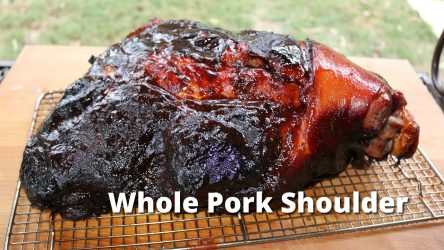
Grills/Gas Grills/Smokers–There are dozens, if not hundreds of different types of grills and smokers and all have their attributes and limitations. I have a Bradley 6 rack digital smoker that I have had for over 10 years, and I still use sometimes; I know that this is not the ultimate set-up, but I also have a stick burner smoker and a pellet grill to augment my operation. A digital smoker just makes things so much easier and precise and with using the Jim Beam briquettes, & I cannot tell the difference from the flavor of charcoal, and you totally eliminate any possibility of that acrid, too-smoky taste.
The ultimate home use Smoker may be the Rec-Tec pellet smoker or a Trager, which have gotten rave reviews. Choose whatever your tastes and budget allow, and if you know what you are doing, you can make great BBQ for almost any type of smoker. I would not, however, recommend using a gas grill for any serious type of BBQ smoking. Look, I have one and use it all the time, but for grilling, NOT smoking. Here is my setup, my Bradley encased in a Husky Cabinet, modified with a smokestack and other goodies.
Heat and Thermometers-If you don’t take anything else to heart in these ABCs, listen to this. Other than the actual cut and preparation of your meat, there is nothing more critical than smoking and cooking your meat to the proper temperature. There are a zillion different types of meat thermometers, those with remote beepers and even those with an app for your iPhone. Impressive, but not necessary. I use a Digital Instant Read Meat Thermometer (shown below) and these are the most useful and accurate devices made. They read the temperature instantly and are now available in ones that are backlit for those situations when you are still cooking in the dead of night.
Some are not cheap, like the Thermapens, but if you are a serious smoker like I am, they are indispensable. Heat management of your smoker is also very critical and must be aggressively managed or you will be disappointed with your results. Digital smokers remove a lot of the guesswork, but you still have to pay attention and don’t expect to plunk a 36-degree, 12 lb. butt in your smoker and not have the temperature suffer.
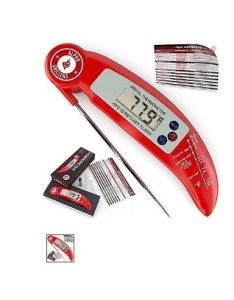
Injection or Brine?– Or neither? This is a controversial subject and personally I’m not a big proponent of injecting either a Boston Butt or a beef brisket. I think that both pieces have enough natural fat and flavor, and if you follow the FTC protocol, you should have a juicy result. I’ve tried it both ways, and cannot really report that injecting helps in any perceptible way. I do brine whole chickens and stuff the carcass with chopped up apples, carrots and celery before smoking, but that’s not BBQ. I make a marinade of Wickers, apple juice and the de-fatted natural juices of the pork butt and mix a small amount with the pork after pulling and the BBQ is plenty juicy without injection. If you feel you must inject your brisket, fine, use some beef base mixed with apple juice and a little Worcestershire sauce. I feel that boating a brisket and the FTC is much more critical than the injection.
Juice or Myoglobin is NOT blood and should not be a concern as all BBQ and brisket is cooked well, well done, to an internal temperature of near or over 200 F. A rare steak has an internal temperature of around 125 F. Cuts of meat like briskets and pork shoulders must be cooked low and slow, and to the point to where all the fat and collagen breaks down. This is not negotiable. Smoking and grilling are two different things and that concept is the most important thing you need to take from this article. I love a good, rare steak, but rare temperatures have no place in the land of BBQ.
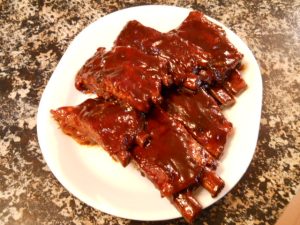
K.C ribs killed with the sauce
Kansas City BBQ–Kansas City Style BBQ is highlighted by a disgustingly and sickeningly sweet presence of BBQ sauce slathered all over their meat that they try to pass off as BBQ. Kansas City tried to steal the BBQ recipe from Memphis, but things got bastardized along the way, and contrary to the rules of BBQ, they, like Texas, try to include other meats as well, so they pretty much got it all wrong. In Kansas City it’s all about the sauce, the sweeter the better for those Philistines. There is one exception, a place called Arthur Bryant’s, who does have decent BBQ and a decent sauce that is not as sweet, created by his wife, who got tired of getting sick off the BBQ cremated in other joints. Kansas City should stick to steaks. (See above)
Low and slow– Indirect heat. This is the very essence of successfully making BBQ or beef brisket. There is just no way around it, so if you are impatient, then just eat your BBQ at a restaurant. You have to have the right meat, the right equipment and enough time for a successful endeavor into the world of wonderful BBQ. I have had some Boston Butts take longer than 24 hours smoked and cooked @ 225 F. Most good-sized briskets will take 12 hours or longer and for both you will need to continue to cook via FTC or a similar method to an internal temperature of over 195 F. for the butts and over 200 F. for the briskets. There will be stalls (See:Zone), sometimes for several hours where the internal temperature of the meat will not seem to move at all, so you have to be patient.

Memphis BBQ– In a blind taste test conducted by The Travel Channel, that included Carolina style, Kansas City style, Memphis style, and Texas style BBQ, Memphis style came in first, and rightfully so. Memphis is the BBQ Mecca of the universe, and this is highlighted by the annual World BBQ Championship that is held on the banks of the Mississippi every May. Memphis is famous for ribs and pulled pork, and the ribs come in two varieties, wet and dry. Now the dry is really a misnomer, the ribs are not dry and tasteless, but are just not slathered with that sweet gook that they use in Kansas City. Rub is put on the dry ribs before and after smoking, and contain a variety of spices, including Greek spices.
Memphis is also famous for their pulled pork sandwiches (with cole slaw, baby!) and other innovative dishes like half ‘n half (half BBQ, half spaghetti), BBQ pizza (delicious!) and BBQ nachos (try Central BBQ for these). If you want dry ribs with all the atmosphere and lore, go to the smoke-filled back alley in downtown Memphis known as Charley Vergo’s Rendezvous. For a dripping, delicious mess of a sandwich, like the one-two pictures down, try Tops (yes, a chain!) or Payne’s on Lamar Ave. It’s a dump, but has great Q.
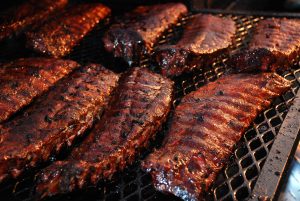
Dry crust on the outside, juicy inside. Memphis dry ribs.
North Carolina and South Carolina BBQ– Carolina BBQ is a complicated situation because there are several different sub-regions of the Carolinas that have their own unique style of BBQ. One thing the Carolinians get right is that they stick to pork only as their BBQ meat of choice. Where they fall short is that the sauce and marinade, they use have a heavy vinegar base and you usually end up with a douched pig.
Other regional sauces include mustard in their sauce, but still have lots of vinegar, so be aware. Now Carolina BBQ is not bad, it’s certainly superior to K.C. or Texas fare, but not nearly as good as genuine Memphis BBQ. There are places like Scott’s BBQ in Hemingway S.C. that are meccas for great BBQ. Whole Hog is his specialty, slow-smoked over pecan wood. I’ve never tried it, but it is supposedly some of the best BBQ in the universe.
Oven or Slow Cooker-After the smoke is on the meat, it really doesn’t matter. I know that BBQ purists will become purple with indignation at the prospect of an Oven, or the huge slow cooker that I use inside, anything that is not some sort of smoke pit, but the truth is that the meat does not care what sort of vehicle gets it up to its ultimate temperature. The big mistake is not using an oven slow cooker, BUT leaving the meat on the smoker for too long (un-foiled). It will dry out, a rookie mistake, not a Pit Master privilege. Doing BBQ right is not just a linear process, but it is using all of your available resources to produce a superior product. Purists, snobs, cement-headed Texans and so-called Pit Masters can just rave on as the proof is in the eating.
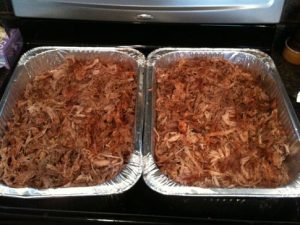
Pulled Pork– Pulled Pork *IS* BBQ. I know that ribs get all the glamor, but this is where it is at with BBQ. I use Boston Butts, as full shoulders are awesome, but take longer and require special attention. Pork Cushion, if you can find it, is part of the Picnic (lower shoulder) and makes awesome and lean pulled pork. Butts require little trimming if any, take well to tons of rub and ultimately are the basis of the most delicious sandwiches (see below) that are sold throughout the BBQ belts of the USA. Cooking low and slow, some butts can take as long as 24 hours or more to reach the magical temperature of 195-205 F. for the collagen to break down and the meat to be tender.
There are several techniques such as FTC and/or using the oven inside (don’t laugh, purists) after the smoke is on the meat. Remember, after the meat is smoked, there are almost always hours more cooking time to reach the optimum temperature (195-200), and the meat really doesn’t care where the heat comes from, be it from an outside smoker or inside oven. The smoke and delicious black bark is already there, an important concept. After the smoking, the cooking and the FTC, the Boston Butts are pulled apart with Bear Claws, re-seasoned with Memphis Belle, and then lightly marinated, sauced and mixed.
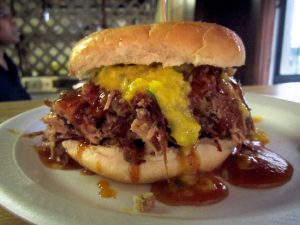
Pulled Pork sammich with mustard slaw from Payne’s BBQ, Memphis Tn.
Quest for the perfect BBQ Rub–There are as many rubs as there are sweating, grimy males hunkered over their precious grills and smokers. For briskets, it’s pretty simple, all you need is a rub of coarse salt and coarse pepper. I mix up my own, with about 70% pepper, 25% salt and 5% Memphis Belle BBQ Blend from Heartbreaking Dawns. Or, what I generally use now is the famous Rendezvous Rub from Memphis, shown below.
Briskets generally require less rub than Boston Butts, which need to be anointed heavily. I rub my butts with mustard as a binder to make the rub stick better (it doesn’t impact the taste) a couple of hours before starting the smoking process. Leaving the meat rubbed overnight is really not necessary, but it doesn’t hurt anything unless your rub contains too much salt. For the Boston Butts, I use mostly the Memphis Belle rub and then a sprinkling of the brisket rub. When buying commercial rubs, pay close attention to the salt content. I try to use as little salt as possible. Another great seasoning is Rendezvous Seasoning developed at that great Memphis Restaurant and readily available online.
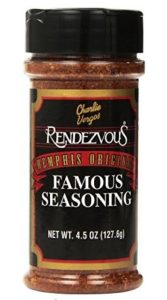
Ribs –Fall off the bone delicious, right? Wrong! If your ribs are falling off the bone, then you have over-cooked them (except for beef, another story). Keeping ribs moist and tender can be difficult, but if you follow a few key concepts and do not become impatient, you can come out with a good result. One reliable method is the 3-2-1 method which includes smoking ribs for 3 hours, foiling them for 2, and then cooking them for another hour uncovered and without smoke.
This method is also known as the “Texas Cheat”, which makes sense as the only way Texans could hope to make BBQ is to cheat. The key to delicious ribs is to be able to maintain a consistent temperature throughout the cooking process, usually around 250 F. It is tough to do on a conventional charcoal barrel smoker and depending on humidity and wind conditions, it may take longer. There are 3 basic types of ribs for BBQ, all pork, of course. Spare Ribs are the meatier, fattier ribs with the big bones, St. Louis cut ribs are just Spare Ribs with the flaps removed and squared up, and then Baby Back ribs are leaner with the smaller bone, and the preferred rib for BBQ rib enthusiasts. Beef ribs are ribs, but are not BBQ and are difficult to get just right.

Sauce–BBQ sauce is almost as controversial as Memphis/Carolina/KC and Texas and it is an intimate part of the controversy over BBQ styles. There are purists out there who blanch at the thought of using BBQ sauce anywhere, anytime, and under any conditions. There is BBQ like Kansas City Style and Carolina style where the sauce is an integral part of the BBQ process. Most is just a matter of taste and style, but there are a few truths about using BBQ sauce.
I guess the most glaring error that novices make is to put their precious sauce on the ribs or meat while it is still cooking. Since most sauces are tomato and/or sugar based, the sauce quickly burns and compromises the taste of your BBQ. Some of the best pulled-pork sandwiches require the sauce, and other dishes have the sauce on the side. I make my own BBQ sauce, it is delicious, it is unique, and it contains the best of all 3 BBQ regions (minus Texas) with a slight touch of heat (chocolate habanero), as well.
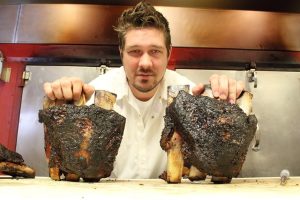
Texas BBQ-An Oxymoron. Texas BBQ does not exist, with rare exceptions (See Franklin’s below). Yeah. Smoked meat is smoked meat, not BBQ. Now there are a few, isolated places like Franklin’s (see below), that serve great food. There are also some individuals who live in Texas, like Miguel Awtry, who are accomplished pit-masters and know how to make real BBQ and other great recipes. I give him a hard time because of, you know, Texas, but he takes it very well.
Texas BBQ (obligatory PC fairness to offset much whining) For some reason, the majority of TV food channels and news publications like to include Texas in discussions about BBQ. For the life of me, I don’t know why. As you know, all Texans are pushy, self-important and obnoxious pinheads, and I guess that extends to their hallucinations about knowing how to do BBQ as well. There are a few isolated places in Texas, like Franklin’s BBQ in Austin Texas, that make fabulous pulled pork BBQ and probably the best brisket around, but as a rule, Texans are as clueless about BBQ as they are about civil rights. Texans will stand in line for hours, and without their guns, to just get a chance to buy BBQ and brisket at Franklin’s. It’s no wonder good BBQ is scarce in the Lone Star State.

Under-cooked or Over-cooked it all means the same, a ruined effort. If you are not using a meat thermometer, and using it properly, you are a Moron, you are wasting your time and your money, so just save your money and go out to eat instead. It’s not that hard, and if Rednecks can do it, so can you. The picture below is properly smoked dry ribs. Two pics up is what Texans try to pass off as BBQ. I don’t know what sort of rancid, diseased steer this “meat” came off of, but the “chef” obviously had to cook this “meat” to Defcon 1 to make it bacteria free. As nutritious and tasty as a Slim Jim, Texas BBQ ribs are loved by its citizens, but their idea of a gourmet meal is boiled sheep tripe and fried prairie grass.
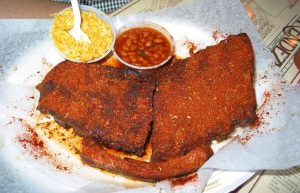
Delicious Memphis-Style Dry Ribs
Vegan BBQ or Smoking things other than meat. Why? If you are a vegetarian and reading this, you are probably in the wrong place, so please leave. No, actually you can smoke things that are not animal flesh, but why in the world would anyone want to? Well, I take that back because smoked cheese can be pretty awesome. There are plenty of vegetarian recipes that invoke the use of your smoker, but if you are the typical, chest-beating BBQ enthusiast, chances are that you have no vegan friends, and that’s OK, too.
Wood–There are many good choices, hickory is most commonly used to smoke pork shoulders and butts for the pulled pork, but apple, cherry and most fruit woods work well too. As I mentioned earlier in the article, too much smoke can be detrimental to the flavor of your beloved BBQ, so use it lightly and only for the appropriate amount of time. Probably the worst thing you can do is to use green wood and there is no evidence that soaking your store-bought hickory chips does any good either, so tread lightly. Less is more when you are smoking, and too much smoke and wood (see below) is perhaps the most common mistake made by Pitmaster wannabees.
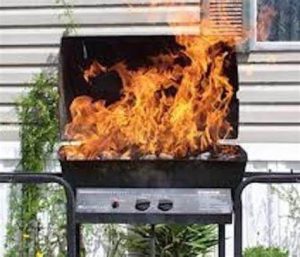
You’re doing it wrong
Xanthan Gum–Is a largely indigestible polysaccharide that is used mostly as a thickening agent for various foods. As far as I can tell, it is pretty harmless and not one of these food additives that should concern you. I just needed something for “X” and a lot of sauces have XG in them, so it made a lot of sense to put it here. Besides, if you are eating huge quantities of smoked meat, you probably have a lot more to worry about than a little Xanthan gum. If you make your own sauce, you can order XG from Amazon or other sources, but most do not bother. They just use tomato paste instead of ketchup or chutney for the sauce.
Yoder Pellet Smoker-I’ve never used one of these, but I’ve seen them in action and was impressed at their consistency and reliability. The Yoder uses different wood flavored pellets and seems to do an excellent job of making BBQ and larger cuts of meat like prime rib. Trager also makes a great line of reliable pellet grills, consistently ranked high by consumer groups.

Zone– A stall, a lull, the internal temperature of your meat just refuses to budge. You have been patiently smoking your meat, faithfully following all the rules and god must hate you as you have encountered the dreaded stall. What in the hell? A stall is simply when the internal temperature of your precious, huge hunk of Boston Butt or Beef Brisket has stopped rising, sometimes for hours. Some so-called experts attribute the stall to the process of breaking down the fat and collagen, but others confidently attribute the stall to evaporative cooling.
It doesn’t really matter, it happens, and must be factored into your smoking and cooking time. More often than not, especially in colder and windier weather, the smoked meat must be finished inside, in an oven or a slow cooker. This is outrageous for newbs who think they are pros, but again, after the smoke is on the meat, it really doesn’t matter what heat source finishes the meat. Low and Slow still works, regardless of the container, so just do it until the meat reaches the required internal temperature.
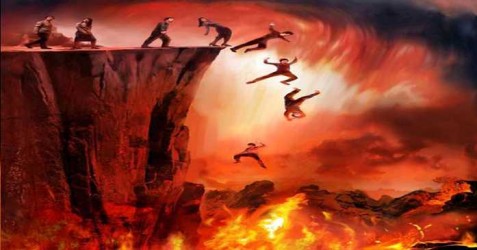
Leave a Reply